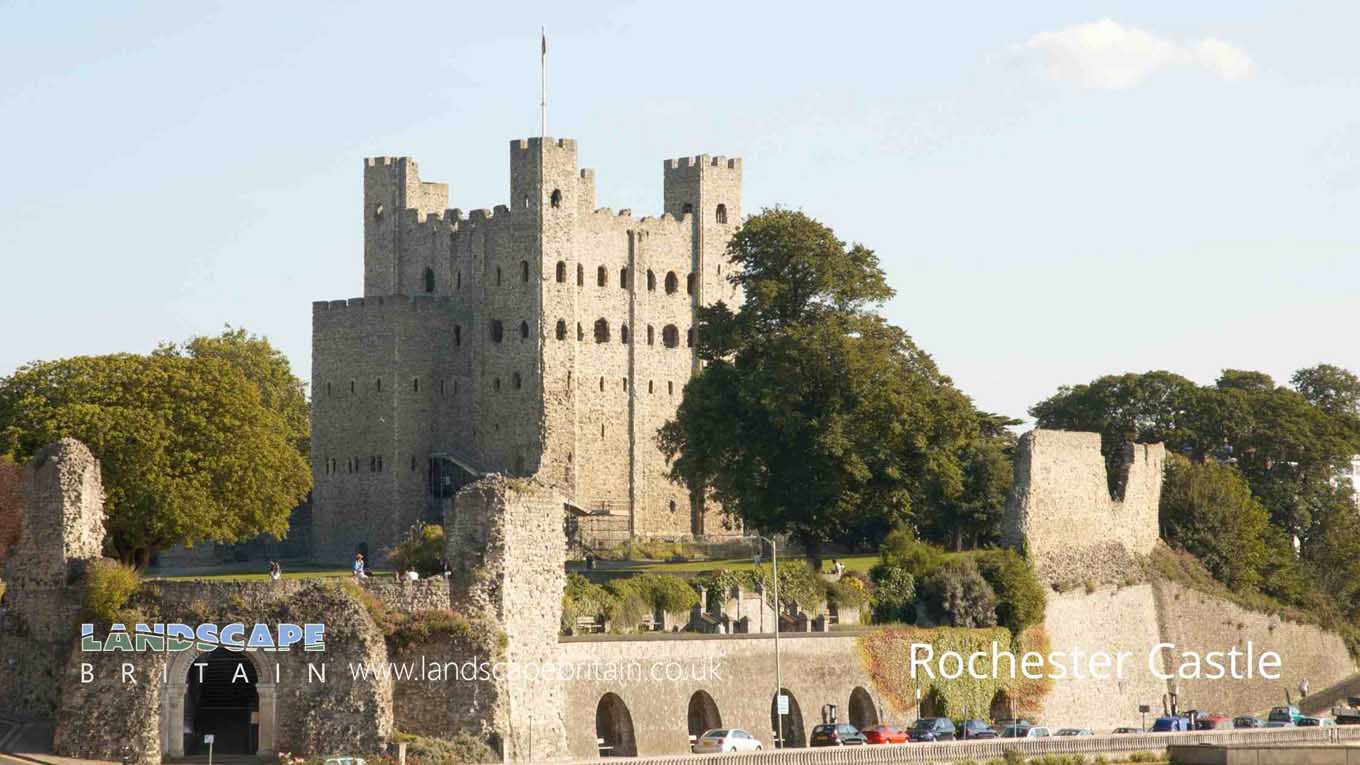Rochester Castle

The building of the first castle began under William Rufus, with stone walls seven feet thick at their base, enclosing about twenty acres. The inner wall had towers placed on it, eight on each side of the square-shaped keep.
The keep of Rochester Castle stands up to seventy feet tall. The walls were originally covered with plaster and brightly painted murals depicting famous battles between English kings and Normans.
The Norman style of architecture used at Rochester Castle is considered to be a rare and speciality. In the mid 1070's William de Corbeil, Archbishop of Canterbury added a chapel with huge Romanesque columns supporting a decorated arch. Although many Norman castles have round towers the ones at Rochester were built in a hexagonal shape, another unique feature in this castle. A tall square tower was added to each corner extending beyond the rest of the walls for extra defense at corners which were often attacked first during siege events (such as this one). This provides anextra wall for the defenders to shoot arrows down on attacking soldiers. The towers were also used as a place for guards to keep watch over the surrounding area, with some of them having holes in the floor which allowed defenders to drop stones or hot oil on attackers who may have made it past the first line of defense.
This style of architecture is very different from that built by William's contemporary brother, Robert Curthose, Duke of Normandy, who built most of his castles using his own unique design incorporating more circular shapes into its structure.
Rochester became an important castle during the early Norman period because whoever controlled Rochester - controlled access between London and Dover. During its active history there was only one occurrence where soldiers successfully breached its walls.
Rochester was besieged three times in its history. The first siege started on April 28th, 1188 against Richard I by his brother, Prince John. The second siege began in 1215 when supporters of a barons' rebellion tried to take control from King John while he stayed at the castle from May until November. In 1642 during the English Civil War Royalists took refuge there but finally surrendered when they ran out of gunpowder and food supplies were running low.
Rochester Castle Postcode:
England > Kent > Medway > Rochester > Rochester Castle
